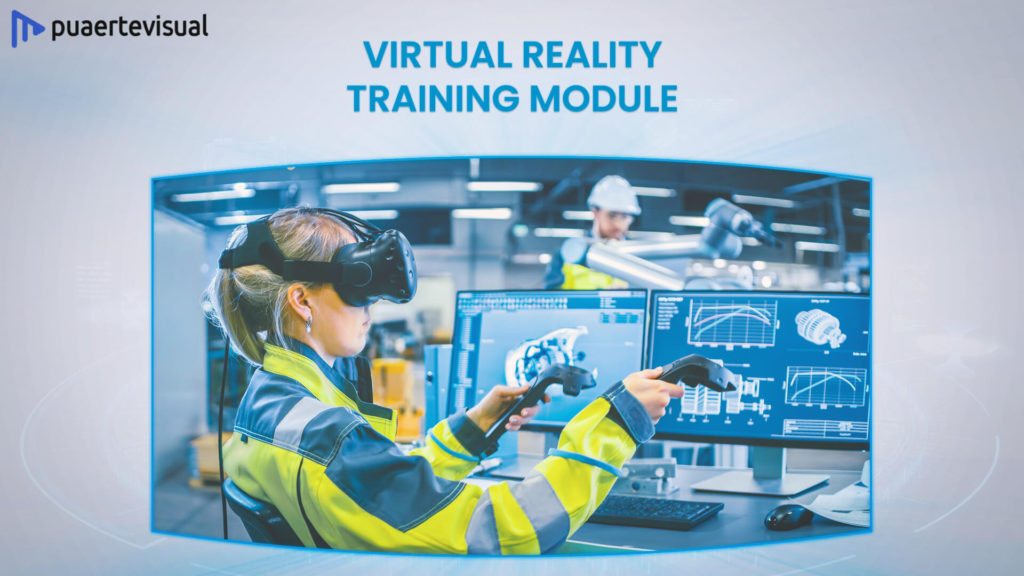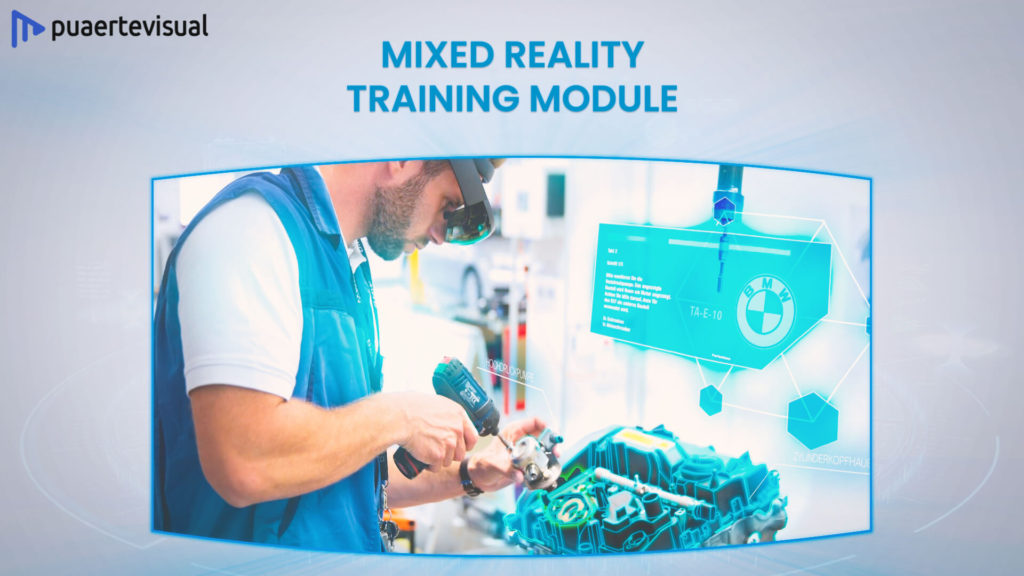
Have you heard of virtual training modules? If you haven’t, it’s high time you did! It’s a type of innovative, immersive training that is currently being used by many businesses and organizations around the world. It makes use of elements such as virtual reality, augmented reality, and game-based learning to create an interactive experience for employees.
In this post, I will discuss how to create a virtual training module that meets your specific needs.
What Is A Virtual Training Module?
A virtual training module (VTM) is an online learning environment that allows employees to learn and train at their own pace with the use of digital audio-visual elements. Advanced modules also integrate AR/VR tech to make the training experience more immersive.
This type of training is becoming increasingly popular, as it offers many benefits over traditional methods.

Benefits Of Using Virtual Training Modules
Let’s take a look at some of the most popular benefits of using virtual training modules.
1. Increased Engagement
One of the biggest benefits of virtual training modules is that they help to keep employees engaged. With traditional learning methods, it can be easy for employees to lose focus or get bored. However, virtual training modules are far more engaging and interactive, which helps to keep employees interested in what they’re learning.
Greater Flexibility
Virtual training modules also offer greater flexibility than traditional methods. Employees are able to access virtual training modules anywhere and at any time, which makes it easier for them to learn on the go.
Adaptive Content
Another big benefit of virtual training is that its adaptive content can be easily updated with new information as needed.
Faster Completion
Virtual training modules are also faster to complete than traditional methods. They allow employees to learn at their own pace, so they can spend as much or little time as necessary on each module without being rushed through it.
Improved Retention Rates
Virtual training modules have been shown to improve retention rates because the content is engaging and interactive. This helps employees to better remember the information they learn, which can be beneficial for their future job prospects.
How To Create A Virtual Training Module
Now that we’ve looked at some of the benefits of virtual training modules, let’s take a look at how you can create one yourself.
Step One: Define Your Goals
The first step is to define your goals for the virtual training module. What do you want employees to learn? What skills do you want them to develop?
Once you have a clear idea of what you want, you can begin designing the modules that will help employees achieve those goals.
Step Two: Choose The Right Platform
The next step is to choose the right platform for your virtual training module. There are a number of different platforms to choose from, so you need to find one that meets your specific needs. Are you looking to create a module that can be accessed only via VR/AR devices? Or are you planning to let the training happen via smartphones and PCs too?
Step Three: Create The Content
This is the step where you plan, select, and create the type of content you’re going to need for your virtual training module. There are different kinds of content to choose from, such as – videos, presentations, demonstrations, simulations, and more!
Step Four: Pilot Test The Module
Once the content is created, it’s important to test it out on a small group of employees before you roll it out to the rest of the company. This will help you to identify any potential issues and make necessary changes before releasing the module to everyone.
Step Five: Roll It Out To The Rest Of Your Employees
The final step is to roll out the virtual training module to the rest of your employees. You can do this by either sending them a link or creating an app for it on their phones!
There you have it! A five-step process to create the perfect virtual training module.

Types Of Interactive Content To Include In VTMs
You might be confused about what kind of content to include to make your training modules more interactive and engaging. Here are a few ideas that could help:
1) Add Interactive Elements – Virtual training modules can be more engaging when they include interactive elements such as quizzes, polls, and games. By adding these types of activities into your virtual training module it will help employees to remember what they’ve learned much better.
2) Digital Storytelling – Add a storyline to your training, allowing the employees to be a part of the story and learn through the experience. You can even have them make choices within the storyline, such as what to do in a difficult situation or what step to take next.
3) Include Simulated Environments – These are environments where your employees can wear AR/VR tech and virtually interact with other employees in real-time. This ensures that they learn new skills without the fear of making costly mistakes. They’re also great for demonstrating how to perform tasks, such as virtual machinery inspections or virtual fire safety training.
Conclusion
Virtual training modules are becoming more and more popular due to the many benefits they offer.
Many companies such as Google and Microsoft are using virtual training modules because they want their employees to be able to access the content whenever they need it, but also so that they can learn in an interactive way. By following the five steps listed above, you too can create a virtual training module that is engaging, interactive, and helps employees learn new skills quickly and easily!
